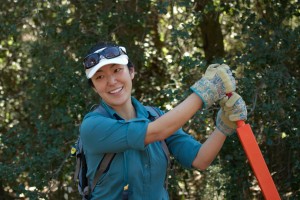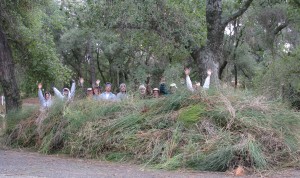
Back to Natives Restoration, in a cooperative agreement with the United States Forest Service in the Cleveland National Forest, will lead a hands-on training course for restoration volunteers from January 19 to March 4, 2017. This successful program is now in its ninth year.
Participants will learn how to remove invasive non-native plant species using tools rather than herbicides. They will learn how to keep themselves and others safe in the field, how to manage restoration volunteers, and how to identify native and non-native plants.
Graduates are eligible to lead volunteer groups in the National Forest. Volunteers and staff from all wild land agencies, organizations and non-profits are welcome to participate, and then share their new knowledge and skills with others.
 Individuals interested in attending the series of classes can visit https://www.backtonatives.org/education
Individuals interested in attending the series of classes can visit https://www.backtonatives.org/education
Ecological restoration is a means of sustaining the diversity of life on Earth and reestablishing healthy ecosystems. Successful habitat restoration ensures that native species are protected while non-native species are removed with minimal impact. Nationwide, invasive plants cost us an estimated $33 billion per year. Invasive plants degrade wildlife habitat – they are the second-greatest threat to endangered species, after habitat destruction.
Back to Natives strives to involve the community in the process of ecological restoration and conservation because it believes that a little “ecological enlightenment” and a chance to “get your hands dirty” is the best way to improve relations between people and nature.
